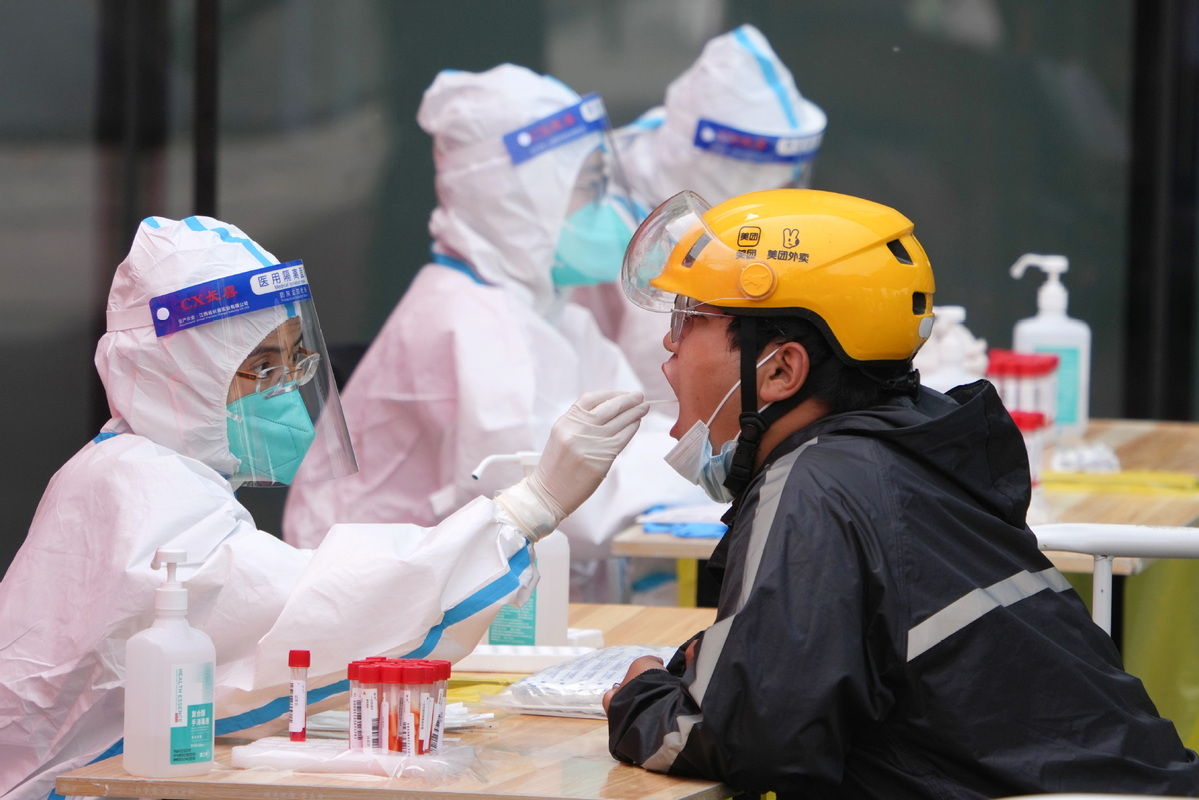Experts: Anti-COVID strategy works
Support expressed after top leadership affirms dynamic clearance is effective

Persevering in the dynamic zero-COVID strategy unwaveringly will set China on a path toward prevailing in the battle against the novel coronavirus, officials and experts said.
As the fight against the latest domestic cluster outbreaks is at a critical stage, they urged against any distortions or denials of the strategy, reaffirming that it is the best way at present to cope with uncertainties brought by viral mutations and safeguard lives and people’s health.
A meeting of the top leadership of the Communist Party of China on Thursday said that the dynamic zero-COVID approach is effective, scientific and will withstand the test of history.
“We have won the battle to defend Wuhan, and we are sure to win the battle to defend Shanghai,” said a statement issued after the meeting of the Standing Committee of the Political Bureau of the CPC Central Committee, which was presided over by President Xi Jinping, also general secretary of the CPC Central Committee and chairman of the Central Military Commission.
The meeting stressed that the COVID-19 pandemic remains at a high level of risk and the virus is constantly mutating. “The endgame of COVID-19 is uncertain and we are far from the moment for relaxing precautions,” it stressed.
China’s resolve in curbing the virus is in line with recent appeals from the World Health Organization.
“It (the virus) is still spreading, it’s still changing, and it’s still killing. The threat of a dangerous new variant remains very real,” Tedros Adhanom Ghebreyesus, director-general of the WHO, said during a news briefing in late April.
Maria van Kerkhove, from the WHO’s Health Emergencies Program, added that the world is still in the grip of the viral pandemic.
“Now is not the time to retreat. Now is the time to really strengthen what we have put in place and ensure that we keep people alive and we get our economies back on track and we save people’s livelihoods,” she said.
In recent weeks, some countries have reported several sub-lineages of Omicron and a recombinant version known as the XE variant, stoking concerns over their ability to trigger new waves of outbreaks.
Wu Zunyou, chief epidemiologist at the Chinese Center for Disease Control and Prevention, said it is misleading to presume that the virus will always get more infectious and less severe over time.
“So far, we have not found any regular patterns of the virus’ mutation, and it will likely become more contagious and more pathogenic at the same time,” he said. “We should prepare for the worst circumstances and keep close track of the virus’ latest changes.”
Faced with such uncertainties, Liang Wannian, head of the National Health Commission’s virus response expert panel, said China’s virus control approach provides a significant safety net for its people, especially the elderly and other vulnerable groups.
“China has a huge elderly population and the vaccination rate among them is not high enough,” Liang said.
“If epidemic control measures are relaxed, there is no doubt that the virus will spread rampantly, result in many severe cases and deaths and overwhelm the medical system,” he said, adding that an overstretched healthcare system will breed a vicious cycle.
The latest data released by the WHO also gave a sobering reminder of the risks posed by the virus.
According to a report released on Thursday, the WHO estimates that there were 14.9 million excess deaths directly or indirectly associated with COVID-19 through 2020 and 2021.
More than 80 percent of the excess deaths were in Southeast Asia, Europe and the Americas.
For a country with a population of 1.4 billion and uneven distribution of medical resources, it is vital for China to adhere to strict virus controls to protect its people, according to the top Party leadership meeting.
It pointed out that easing COVID-19 curbs at present will take a heavy toll on the health of the Chinese people, as well as social and economic development.
The meeting warned against any distortions and denials of the dynamic clearance approach and urged concerted efforts to tackle the recent outbreaks.
Liang said that upgraded measures are in place to cope with the highly contagious Omicron variant.
“Since March of this year, we have entered the latest and fourth stage of the fight against the virus,” he said. The phase calls for faster detection of cases and full preparedness in quarantine and treatment facilities.
Wu Liangyou, deputy director of the National Health Commission’s Bureau of Disease Prevention and Control, said that from April 30 to Thursday, the daily number of COVID-19 infections averaged at about 5,800, down by 80 percent from the peak in this round of the epidemic.
Party officials in Shanghai and Jilin province-the hardest-hit regions in recent outbreaks-reiterated their commitment to the dynamic zero-COVID policy on Thursday evening.
Shanghai said it will accelerate building nucleic acid testing sites and expanding isolation facilities, while ensuring supplies of daily necessities and meeting the medical needs of non-COVID patients.
Jilin in northeastern China, which has nearly eliminated the virus’ spread in communities, said it will strive to resume production, stabilize supply chains and ensure normal harvests while continuing to implement regular virus control measures.
